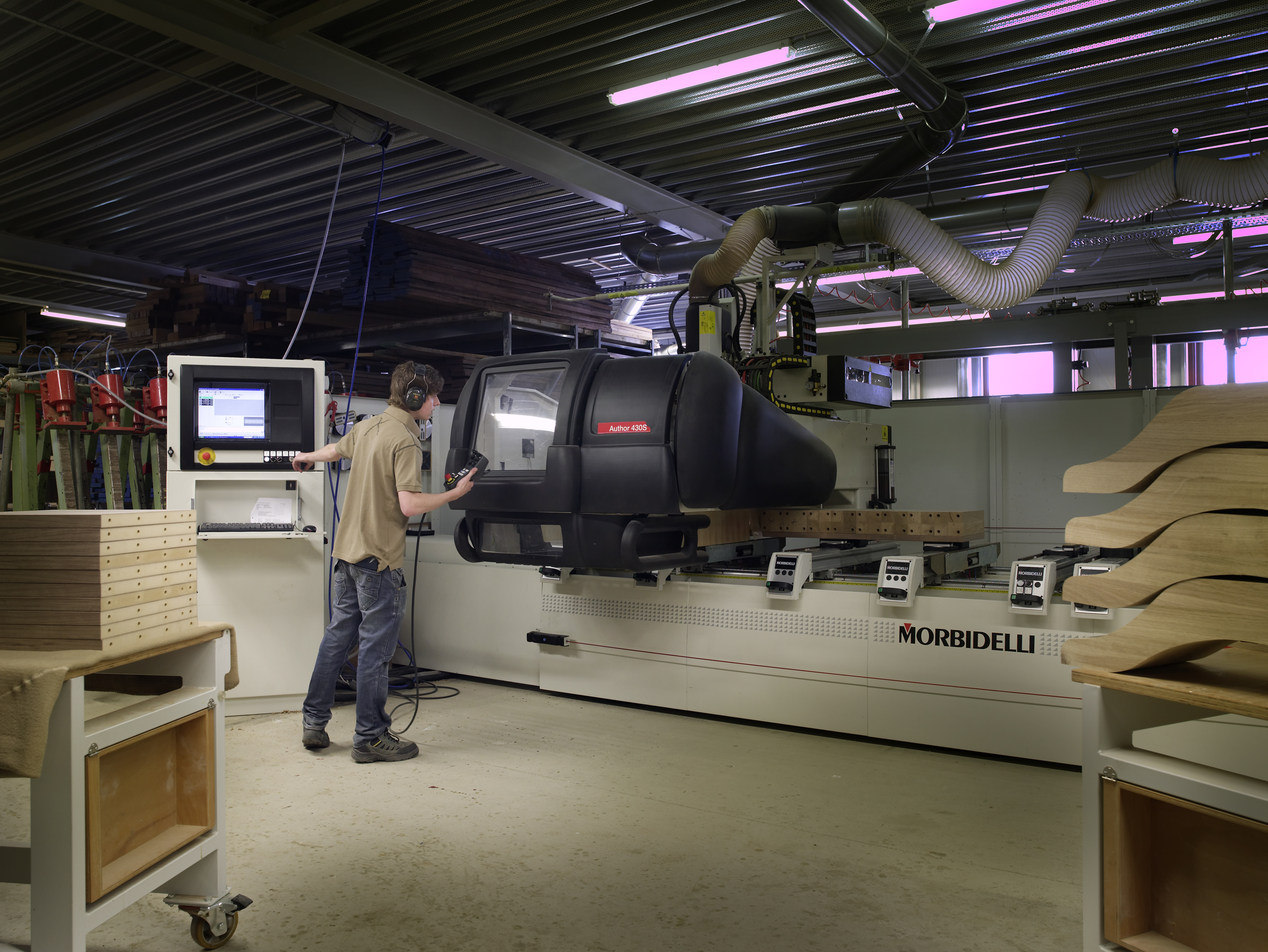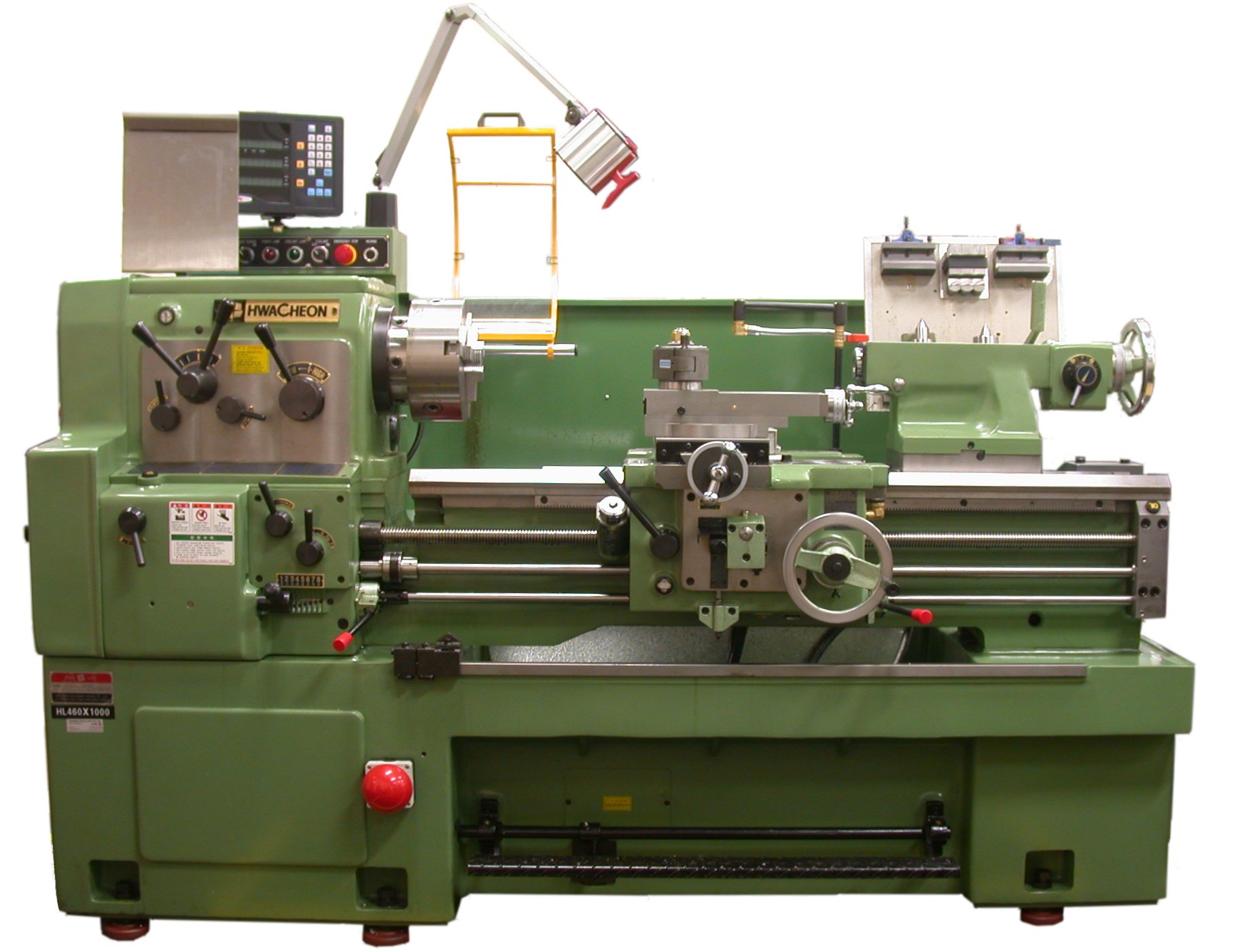|
Part Program
The part program is a sequence of instruction that describe the work that is to be done to a part. Typically these instructions are generated in Computer-aided manufacturing software and are then fed into the computer numerical control (CNC) software on the machines, such as drills, lathes, mills, grinders, routers, that are performing work on the part. The CNC computer then translates the set of instructions into a standardized format of G-code and M-code commands and follow the instructions in the order they are written left to right or top to bottom. When multiple repetitive operations are needed on a large number of parts canned cycles can be used to reduce the number of operation blocks in a part program. In some cases a part might need to go between multiple machines and have multiple operations performed on it to generate the geometry that is need.Example of the order of operations seen in a typical program {{Cite book , last=Virasak , first=LamNgeun , title=Manufacturing ... [...More Info...] [...Related Items...] OR: [Wikipedia] [Google] [Baidu] |
|
|
Computer-aided Manufacturing
Computer-aided manufacturing (CAM) also known as computer-aided modeling or computer-aided machining is the use of software to control machine tools in the manufacturing of work pieces. This is not the only definition for CAM, but it is the most common. It may also refer to the use of a computer to assist in all operations of a manufacturing plant, including planning, Industrial management, management, transportation and storage. Its primary purpose is to create a faster production process and components and tooling with more precise dimensions and material consistency, which in some cases, uses only the required amount of raw material (thus minimizing waste), while simultaneously reducing energy consumption. CAM is now a system used in schools and lower educational purposes. CAM is a subsequent computer-aided process after computer-aided design (CAD) and sometimes computer-aided engineering (CAE), as the model generated in CAD and verified in CAE can be input into CAM software, w ... [...More Info...] [...Related Items...] OR: [Wikipedia] [Google] [Baidu] |
|
 |
Computer Numerical Control
Computer numerical control (CNC) or CNC machining is the Automation, automated control of machine tools by a computer. It is an evolution of numerical control (NC), where machine tools are directly managed by data storage media such as punched cards or punched tape. Because CNC allows for easier programming, modification, and real-time adjustments, it has gradually replaced NC as computing costs declined. A CNC machine is a motorized maneuverable tool and often a motorized maneuverable platform, which are both controlled by a computer, according to specific input instructions. Instructions are delivered to a CNC machine in the form of a sequential program of machine control instructions such as G-code and M-code, and then executed. The program can be written by a person or, far more often, generated by graphical computer-aided design (CAD) or computer-aided manufacturing (CAM) software. In the case of 3D printers, the part to be printed is "sliced" before the instructions (or ... [...More Info...] [...Related Items...] OR: [Wikipedia] [Google] [Baidu] |
|
Drill
A drill is a tool used for making round holes or driving fasteners. It is fitted with a drill bit for making holes, or a screwdriver bit for securing fasteners. Historically, they were powered by hand, and later mains power, but cordless battery-powered drills are proliferating due to increased efficiency and ease of use. Drills are commonly used in woodworking, metalworking, construction, machine tool fabrication, and utility projects. Specially designed versions are made for surgery, dentistry, miniatures, and other applications. History Around 35,000 BC, ''Homo sapiens'' discovered the benefits of the application of rotary tools. This would have rudimentarily consisted of a pointed rock being spun between the hands to bore a hole through another material. This led to the hand drill, a smooth stick, that was sometimes attached to flint point, and was rubbed between the palms. This was used by many ancient civilizations around the world including the Mayans. The ear ... [...More Info...] [...Related Items...] OR: [Wikipedia] [Google] [Baidu] |
|
 |
Lathe
A lathe () is a machine tool that rotates a workpiece about an axis of rotation to perform various operations such as cutting, sanding, knurling, drilling, deformation, facing, threading and turning, with tools that are applied to the workpiece to create an object with symmetry about that axis. Lathes are used in woodturning, metalworking, metal spinning, thermal spraying, reclamation, and glass-working. Lathes can be used to shape pottery, the best-known design being the Potter's wheel. Most suitably equipped metalworking lathes can also be used to produce most solids of revolution, plane surfaces and screw threads or helices. Ornamental lathes can produce three-dimensional solids of incredible complexity. The workpiece is usually held in place by either one or two ''centers'', at least one of which can typically be moved horizontally to accommodate varying workpiece lengths. Other work-holding methods include clamping the work about the axis of rotation using a ... [...More Info...] [...Related Items...] OR: [Wikipedia] [Google] [Baidu] |
 |
Milling (machining)
Milling is the process of machining using rotary Milling cutter, cutters to remove material by advancing a cutter into a workpiece. This may be done by varying directions on one or several axes, cutter head speed, and pressure. Milling covers a wide variety of different operations and machines, on scales from small individual parts to large, heavy-duty gang milling operations. It is one of the most commonly used processes for machining custom parts to precise tolerances. Milling can be done with a wide range of machine tools. The original class of machine tools for milling was the milling machine (often called a mill). After the advent of computer numerical control (CNC) in the 1960s, milling machines evolved into ''machining centers'': milling machines augmented by automatic tool changers, tool magazines or carousels, CNC capability, coolant systems, and enclosures. Milling centers are generally classified as vertical machining centers (VMCs) or horizontal machining centers (HMCs ... [...More Info...] [...Related Items...] OR: [Wikipedia] [Google] [Baidu] |
 |
Grinding Machine
A grinding machine, often shortened to grinder, is any of various power tools or machine tools used for grinding. It is a type of material removal using an abrasive wheel as the cutting tool. Each grain of abrasive on the wheel's surface cuts a small chip from the workpiece via shear deformation. Grinding as a type of machining is used to finish workpieces that must show high surface quality (e.g., low surface roughness) and high accuracy of shape and dimension. As the accuracy in dimensions in grinding is of the order of 0.000025 mm, in most applications, it tends to be a finishing operation and removes comparatively little metal, about 0.25 to 0.50 mm depth. However, there are some roughing applications in which grinding removes high volumes of metal quite rapidly. Thus, grinding is a diverse field. Overview The grinding machine consists of a bed with a fixture to guide and hold the workpiece and a power-driven grinding wheel spinning at the required speed. The ... [...More Info...] [...Related Items...] OR: [Wikipedia] [Google] [Baidu] |
 |
CNC Router
A computer numerical control (CNC) router is a computer-controlled cutting machine which typically mounts a hand-held router as a spindle which is used for cutting various materials, such as wood, composites, metals, plastics, glass, and foams. CNC routers can perform the tasks of many carpentry shop machines such as the panel saw, the spindle moulder, and the boring machine. They can also cut joinery such as mortises and tenons. A CNC router is very similar in concept to a CNC milling machine. Instead of routing by hand, tool paths are controlled via computer numerical control. The CNC router is one of many kinds of tools that have CNC variants. Applications A CNC router can be used to produce items such as door carvings, interior and exterior decorations, wood panels, sign boards, wooden frames, moldings, musical instruments, furniture. In addition, they see use in industry in the thermoforming of plastics by automating the trimming process. CNC routers can help ensure p ... [...More Info...] [...Related Items...] OR: [Wikipedia] [Google] [Baidu] |
|
G-code
G-code (abbreviation for geometric code; also called RS-274, standardized today in ISO 6983-1) is the most widely used computer numerical control (CNC) and 3D printing programming language. It is used mainly in computer-aided manufacturing to control automated machine tools, as well as for 3D-printer slicer applications. G-code has many variants. G-code instructions are provided to a machine controller (industrial computer) that tells the motors where to move, how fast to move, and what path to follow. The two most common situations are that, within a machine tool such as a lathe or mill, a cutting tool is moved according to these instructions through a toolpath cutting away material to leave only the finished workpiece and/or an unfinished workpiece is precisely positioned in any of up to nine axes around the three dimensions relative to a toolpath and, either or both can move relative to each other. The same concept also extends to noncutting tools such as forming or b ... [...More Info...] [...Related Items...] OR: [Wikipedia] [Google] [Baidu] |
|
|
Canned Cycle
A canned cycle is a way of conveniently performing repetitive CNC machine operations. Canned cycles automate certain machining functions such as drilling, boring, threading, pocketing, etc... Canned cycles are so called because they allow a concise way to program a machine to produce a feature of a part.. A canned cycle is also known as a fixed cycle. A canned cycle is usually permanently stored as a pre-program in the machine's controller and cannot be altered by the user. Programming format The operation of a CNC machine tool is typically controlled by a " part program" written a language known as G-code. Canned cycles are similar in concept to functions in a traditional computer language, and can be compared also to G-code macros. The format for a canned cycle consists of a series of parameters specified with a letter and a numerical value. The letter is referred to as an "address". (This use of the term "address" may be unfamiliar to programmers of conventional computers. ... [...More Info...] [...Related Items...] OR: [Wikipedia] [Google] [Baidu] |
|
 |
Computer-aided Design
Computer-aided design (CAD) is the use of computers (or ) to aid in the creation, modification, analysis, or optimization of a design. This software is used to increase the productivity of the designer, improve the quality of design, improve communications through documentation, and to create a database for manufacturing. Designs made through CAD software help protect products and inventions when used in patent applications. CAD output is often in the form of electronic files for print, machining, or other manufacturing operations. The terms computer-aided drafting (CAD) and computer-aided design and drafting (CADD) are also used. Its use in designing electronic systems is known as ''electronic design automation'' (''EDA''). In mechanical design it is known as ''mechanical design automation'' (''MDA''), which includes the process of creating a technical drawing with the use of computer software. CAD software for mechanical design uses either vector-based graphics to depict t ... [...More Info...] [...Related Items...] OR: [Wikipedia] [Google] [Baidu] |
 |
Computer-aided Technologies
Computer-aided technologies (CAx) is the use of computer technology to aid in the design, analysis, and manufacture of products. Advanced CAx tools merge many different aspects of product lifecycle management (PLM), including design, finite element analysis (FEA), manufacturing, production planning, product * Computer-aided design (CAD) * Computer-aided architectural design (CAAD) * Computer-aided engineering (CAE) * Computer-aided fixture design (CAFD) * Computer-aided innovation (CAI) * Computer-aided industrial design (CAID) * Computer-aided manufacturing (CAM) * Computer-aided process planning (CAPP) * Computer-aided requirements capture (CAR) * Computer-aided rule definition (CARD) * Computer-aided rule execution (CARE) * Computer-aided software engineering (CASE) * Computer-aided automation (CAA) * Computer-assisted surgery (CAS) ** Computer-aided surgical simulation (CASS) * Computational fluid dynamics (CFD) * Component information system (CIS) * Computer-integr ... [...More Info...] [...Related Items...] OR: [Wikipedia] [Google] [Baidu] |